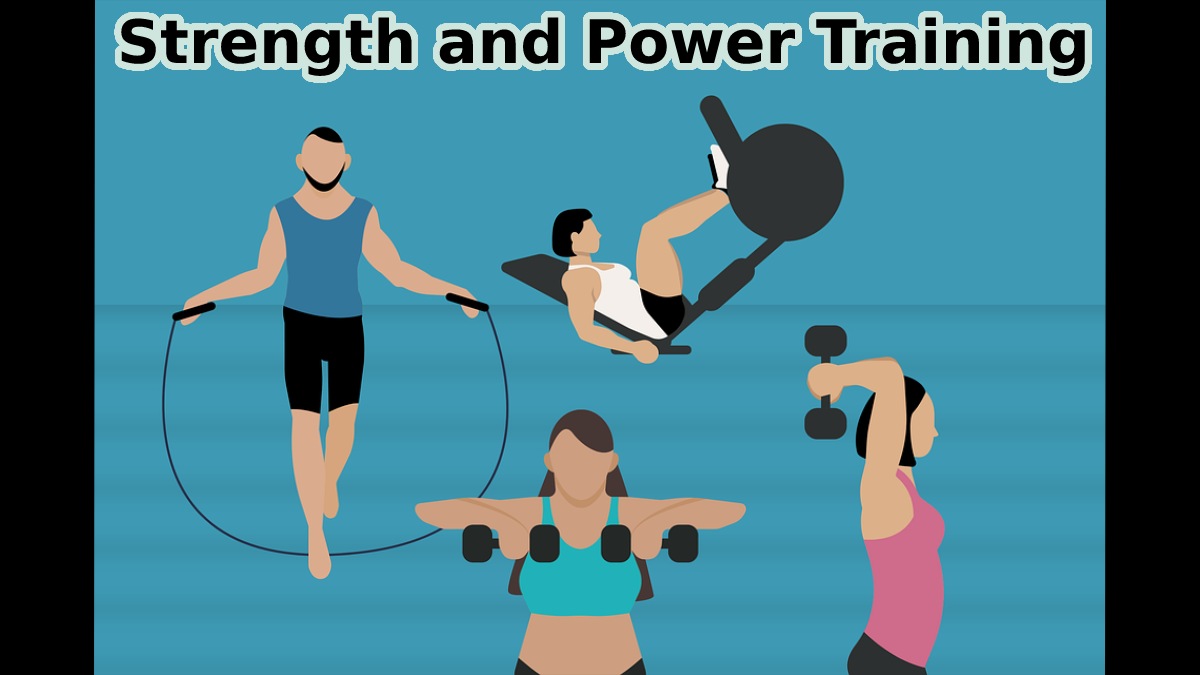Strength and Power Training
Table of Contents
Introduction
On the one hand, about the modification of muscle length, we can classify muscle contractions into two categories:
- Isometric or static: where muscle contraction does not mobilize the levers, maintaining the distance between the insertion points.
- Anisometric or dynamic: where the contraction of the muscle produces the displacement of the levers and modifies the distance between the insertion points.
Likewise, we can delve into the anisometric, pointing out two types of contractions into which they are subdivided:
- Concentric: The muscle contraction overcomes the load by bringing its insertion points closer together.
- Eccentric: muscular contraction overcome or allows itself to overwhelm by the load, moving the insertion points away.
It should be noted that most sports gestures are not only formed by the chaining of the three phases of muscle contraction. That is (eccentric, isometric and concentric) but also do so at great speed. For this reason, it is advisable to train them through exercises that affect the use of the stretching and shortening cycle. Also called Plyometrics. Performing a concentric phase immediately after an eccentric has shown to increase power output by harnessing the stretch reflex. The energy stored during the eccentric phase of the movement.
The importance of muscle contractions
To develop strength, the muscle must reach maximum tension. For this, Gilles Cometti, in his book The modern methods of bodybuilding, mentions the three strength training methods of Zatsiorski (1966):
- Maximum efforts method: It is about reaching the most significant possible tension through very high loads that allow us to perform between 1 and 3 maximum repetitions, working with approximately 90% of the 1RM around five series.
- Repeated efforts method: It is about reaching the maximum tension with slightly lower loads, that is, weights that allow us to perform six repetitions in 6-12 series.
- The dynamic effort method involves performing exercises with submaximal loads or even without load, seeking maximum speed and performing up to 15 series of 6 repetitions.
Knowing this, we have combinations of these three methods and training based on the phase of muscle contraction. That we want to develop (isometric, concentric, eccentric). So the use of CEA (plyometric), which we will create below.
isometric Strength and Power Training
The training focused on this type of muscle contraction presents as an alternative to traditional dynamic training for strength development. In addition, it is easy to perform, allows you to work at less favourable angles for active work and makes it possible. Poduce maximum muscle activation with low loads.
Note that according to electromyographic measurements, isometric contraction requires less muscle activation than concentric contraction to produce the same force. The energy requirement of muscle contraction is between concentric and eccentric contraction.
On the other hand, isometric training can carry out in two ways:
- Maximum isometry: The goal is to exceed the leading concentric force. So the time required is between 3 and 6 seconds.
- Isometry to Fatigue performed at submaximal intensity (50-90% of 1RM) but is carried to exhaustion (maximum 20 seconds). The more the muscle fatigued, the more electrical activity increases, giving rise to muscle tremors (motor unit synchronization signal). Allowing maximum muscle activation to be achieved without hefty loads.
However, the isometric method not always ideal for working on maximum strength and power because sports gestures executed at high speed. Cometti points out that one of the drawbacks of isometric work is the possible decrease in the rate of contraction. For this reason, it’s chaining with concentric exercises with a light load or plyometric exercises called the mixed-method (static-dynamic). So with which we will ensure maximum activation by the nervous system, is fascinating.
Here is an example of each type of exercise: Strength and Power Training
- In the case of maximum isometry, we can prepare a bar with a load greater than 100% of the 1RM on a rack. In this way, the athlete will placed in a squat position and apply maximum force without movement for a period ranging from 4 to 6 seconds.
- Regarding isometry until Fatigue, we can adopt a sitting position with the support of the back against the wall. Focusing the work on the leg muscles, seeking to resist this position for as long as possible. If it is necessary to increase the intensity, we can use discs or sandbags.
- About the mixed method, we have two options:
- Chaining of static and dynamic phases within the same exercise. We will perform a squat where, once the eccentric phase completed. We will pause for 2 to 3 seconds when the knees at an angle of 90 o to finish the movement concentrically in an explosive way.
- Chaining of static and dynamic exercises. We will perform a maximum squat isometry of 4 to 6 seconds. Followed by six concentric jumps to a bench, repeating these two exercises.


